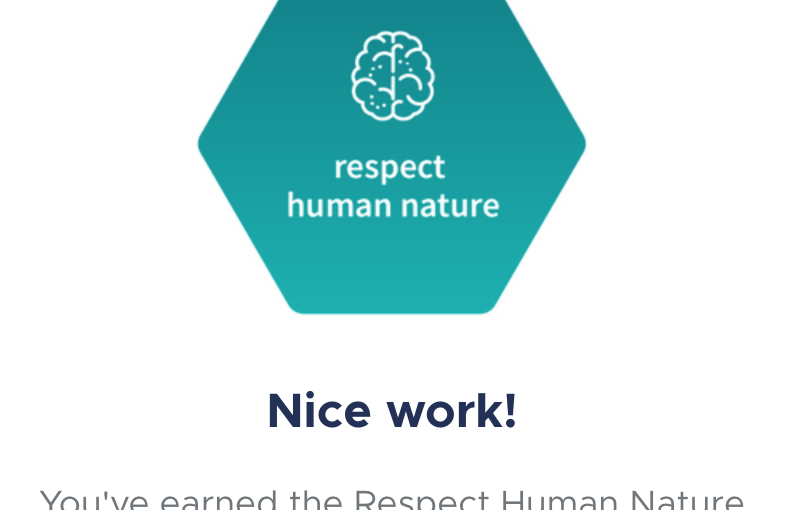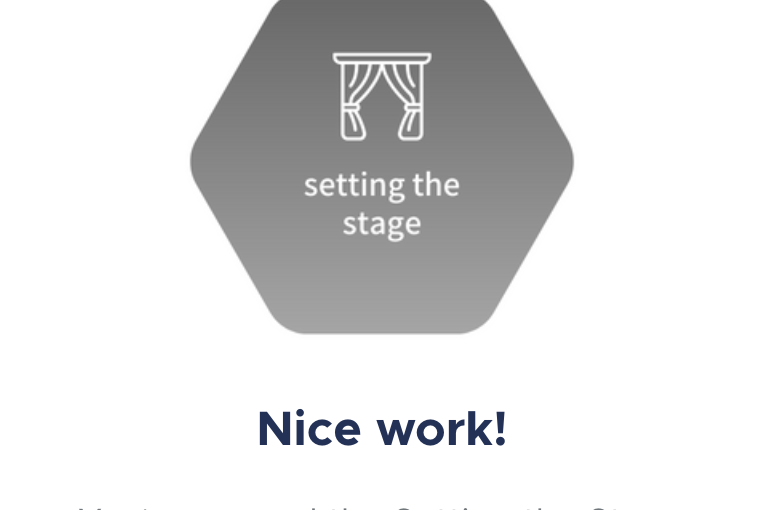I’m taking at my pace the free online course “Foundations of humane technology” by the Center for Humane Technology (whom I had heard of after watching the excellent documentary “The Social Dilemma”.) These are my notes.
- Module 1 – setting the stage
- Module 2 – respecting human nature
- Module 3 – minimizing harmful consequences
- Module 4 – centering values
- Module 5 – creating shared understanding
- Module 6 – supporting fairness & justice
- Module 7 – helping people thrive
- Module 8 – ready to act
The myth of “neutral” tech
“Systemic fragility will persist as long as it is culturally and legally justifiable.”
Center for Humane Technology
Claiming that technology is “neutral” is the most common justification for its harms, and that whether it’s good or bad depends on how people use it. This is abdicating responsibility. Technology is not, and can not ever, be neutral.
Example: In social media (e.g., YouTube, Instagram, LinkedIn, Twitter/X, etc.) there is no neutral way to personalize how someone receives information, because of design choices made when developing algorithms.
The goal of humane technologist is to seek alignment (not neutrality, since it cannot exist). Alignment is being in service to the values of the users, the stakeholders, the broader community, etc. Humane technologists align the products they design with their mission statement, and endeavour for “stated” values and “demonstrated values” to match.
🤔 Personal reflection: The conditions that shaped my present
Pause to consider the conditions and people that have shaped you and your reality, such as where you were born, if it was a safe and healthy environment, who taught you to read and write, who helped you to become a technologist, which technologies were most influential in your life growing up.
I mentioned in a previous post about a previous module of the course, that I have been fortunate with regard to where and when I was born, and am aware of my white-and-wealthy privilege. And grateful. From my upbringing and education to the paths I chose, I have been either lucky or informed about the unconscious and conscious choices I made, the people I met. I see this as a virtuous circle feeding virtue back along the way. Good begets good.
I’m not a technologist myself but I have been working in tech now precisely half my life. The kind of tech that begets more tech: web standardization. We seek to develop technology with the most benefits to humanity and the least friction and harms.
Metrics are not neutral either
Metrics drive decision-making in product development but also consumption of a product. They offer a partial and biased sense of things, though and it’s important to remember externalities. For example:
- Time on site / engagement may lead to addiction, loneliness, polarization
- Attention-grabbing clickbait may lead to a shift in values, the rise of extremism, or a race to grab the most attention and the loss of sight of simpler yet more meaningful matters
- Artificial Intelligence / Machine Learning systems may self-reinforce feedback loops, exploit vulnerabilities amplify bias
Be metrics-informed but values-driven.
🤔 Personal reflection: Identifying gaps in metrics
Metrics are efficient, and efficiency might make decisions easier and products more profitable. But what if that increased efficiency decreases a human capacity worth protecting?
Perhaps one way to avoid/mitigate unintended harms or to bring reducing harms as a goal, would be to rely on enough metrics –not too few and not too many– (so as to widen the pool of trends to consider), and to include as part of the measured elements one or more that derive directly from the product stated values (as as to balance things more towards values).
Harnessing values
- We turn what we like in the world/society into values
- Our values shape our work/products
- Our work/products shape the world/society
🤔 Personal reflection: Understanding values
Consider the life experiences which have shaped the values you hold. What are those experiences, and which values did they shape?
Justice, fairness and equity is probably the group of values that I’ve held the longest, because my parents based all of their parenting on those and that has had a durable impact on their children: my twin brother and me. Altruism is probably the value I adopted next, as a result of volunteering at the French Red Cross, which was NOT motivated by altruism at all: I was convinced by my brother to accompany him because he didn’t want to take a first-aid course alone, and he was motivated by the prospect of adding something positive to his first resume. But we received enough and more in useful teachings, sense of worth, friendships, experiences etc., that we both joined and committed for years into adulthood. Aspiring to make a difference is a value I picked up at work, being surrounded by so many people (internally and externally in close circles) who do make a difference, that it’s inspiring. Finally, I want to highlight integrity as a value that appeared when I started parenting myself and has grown with my child because it’s fundamental to upbringing.
How has your personal history and the values that arise from it shaped the unique way you build products? (If you don’t build products, consider how they’ve informed your career and/or engagement with technology.)
I’m not sure. It may be the other way around where the strict organizational value-based process to designing web standards has shaped how I engage with technology and the care I give to approach any endeavor.
Once your product is out in the world, it will have unintended consequences and will be shaped by values other than your own. How might your product be used in ways that conflict with your own values? (If you don’t build products, think about something else you’ve previously built, organized, or supported.)
[I don’t have any experience to illustrate this aspect of understanding values]
Genuine trustworthiness
Genuine trustworthiness provides a path where success is defined by values, not markets; by a culture of values alignment; where stakeholders are partners rather than adversaries. Key factors of trustworthiness are:
- Integrity (intentions/motivations are aligned with stated values)
- Competency (ability to accomplish stated goals)
- Accountability (fulfilling integrity and competency directly supports your stakeholders)
- Education (a result of your work over time is the reduction of the asymmetries of power and knowledge)




!["What was the original problem you were trying to fix?"; "Well, I noticed one of the tools I was using had an inefficiency that was wasting my time." 'What are you working on?' [person at computer answers:] 'Trying to fix the problems I created when I tried to fix the problems I created when I tried to fix the problems I created when...'](https://blog.koalie.net/wp-content/uploads/2024/01/fixing_problems.png)




![xkcd comic 1831: Our field has been struggling with this problem for years. [one person grabs a computer and exclaims:] 'struggle no more: I'm here to solve it with algorithms!' [person at computer while others watch] last vignette, 6 months later: 'Wow, this problem is really hard,' says the person at the computer. 'You don't say.' answers the other person.](https://blog.koalie.net/wp-content/uploads/2024/01/here_to_help.png)
